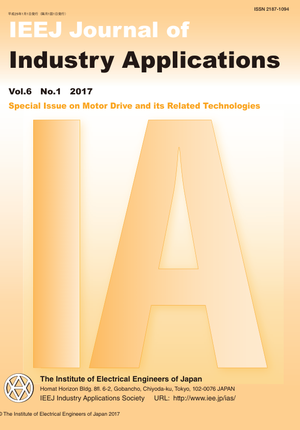Frequency-Based Analysis of the Relationship between Cutting Force and CT Number for an Implant-Surgery-Teaching Robot
Frequency-Based Analysis of the Relationship between Cutting Force and CT Number for an Implant-Surgery-Teaching Robot
カテゴリ: 論文誌(論文単位)
グループ名: 【D】産業応用部門(英文)
発行日: 2017/01/01
タイトル(英語): Frequency-Based Analysis of the Relationship between Cutting Force and CT Number for an Implant-Surgery-Teaching Robot
著者名: Koyo Yu (Department of System Design Engineering, Keio University), Takuya Matsunaga (Department of System Design Engineering, Keio University), Hiromasa Kawana (Department of Dentistry and Oral Surgery, Keio University), Shin Usuda (Tachikawa Hospital),
著者名(英語): Koyo Yu (Department of System Design Engineering, Keio University), Takuya Matsunaga (Department of System Design Engineering, Keio University), Hiromasa Kawana (Department of Dentistry and Oral Surgery, Keio University), Shin Usuda (Tachikawa Hospital), Kouhei Ohnishi (Department of System Design Engineering, Keio University)
キーワード: haptic,haptic dental training,CT number estimation,drilling system,motion control,vibration modeling
要約(英語): An individual's feeling of bone quality during a drilling procedure is important for predicting the prognosis of a dental implant. At present, the estimation of an individual's feeling is subjective, and a new, definitive, data-based classification scheme is needed to identify bone quality objectively. A tele-robotic drilling system was developed to solve this problem. This paper presents a model for predicting vibration during bone drilling. The forces from the drill are modeled by considering the indentation process that occurs under different form computed tomography (CT) numbers. This method can be applied to a cutting-force presentation method using a haptic drilling system. An experiment was conducted to confirm the validity of the proposed method. The result shows that the experimental simulation achieved the same force response as the real cutting. The mean of the error between the real cutting force and the predicted cutting force was 3.5%. The system allows dental students to learn and practice procedures such as cutting the jaw bone. The advantages of this system are that it has a high force-output quality and a fine position-sensing ability. Therefore, dental students can simulate a realistic force response from the bone if the CT number has been acquired. This system can also be used for real implantation surgery because it allows doctors to experience the force response before operating.
本誌掲載ページ: 66-72 p
原稿種別: 論文/英語
電子版へのリンク: https://www.jstage.jst.go.jp/article/ieejjia/6/1/6_66/_article/-char/ja/
受取状況を読み込めませんでした


